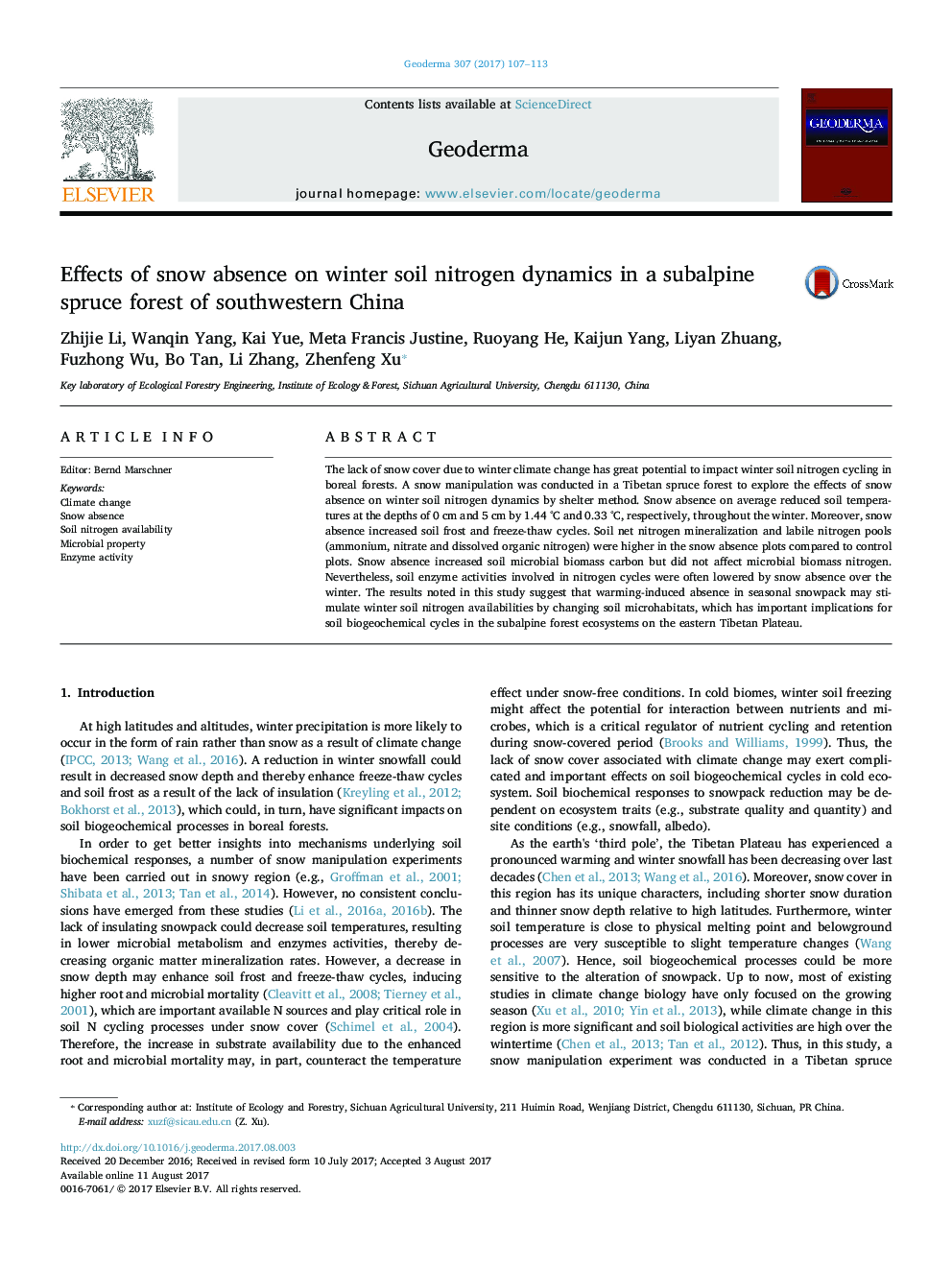| Article ID | Journal | Published Year | Pages | File Type |
|---|---|---|---|---|
| 5770235 | Geoderma | 2017 | 7 Pages |
â¢Snow absence decreased soil temperatures but increased soil frost and freeze-thaw cycles;â¢Snow absence stimulated winter soil net nitrogen mineralization and availabilities of Tibetan spruce forest;â¢Snow absence lowered soil enzyme activities involved in nitrogen cycles during the snow-covered period.
The lack of snow cover due to winter climate change has great potential to impact winter soil nitrogen cycling in boreal forests. A snow manipulation was conducted in a Tibetan spruce forest to explore the effects of snow absence on winter soil nitrogen dynamics by shelter method. Snow absence on average reduced soil temperatures at the depths of 0 cm and 5 cm by 1.44 °C and 0.33 °C, respectively, throughout the winter. Moreover, snow absence increased soil frost and freeze-thaw cycles. Soil net nitrogen mineralization and labile nitrogen pools (ammonium, nitrate and dissolved organic nitrogen) were higher in the snow absence plots compared to control plots. Snow absence increased soil microbial biomass carbon but did not affect microbial biomass nitrogen. Nevertheless, soil enzyme activities involved in nitrogen cycles were often lowered by snow absence over the winter. The results noted in this study suggest that warming-induced absence in seasonal snowpack may stimulate winter soil nitrogen availabilities by changing soil microhabitats, which has important implications for soil biogeochemical cycles in the subalpine forest ecosystems on the eastern Tibetan Plateau.
